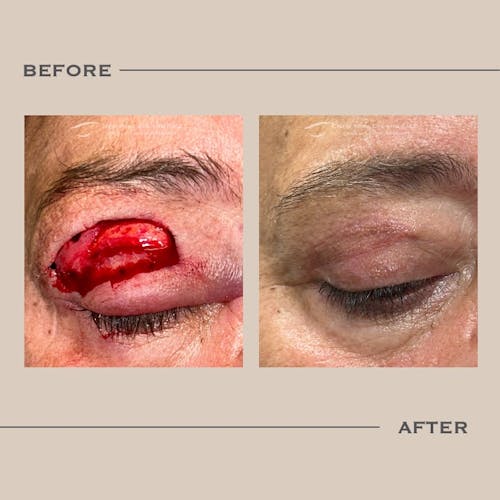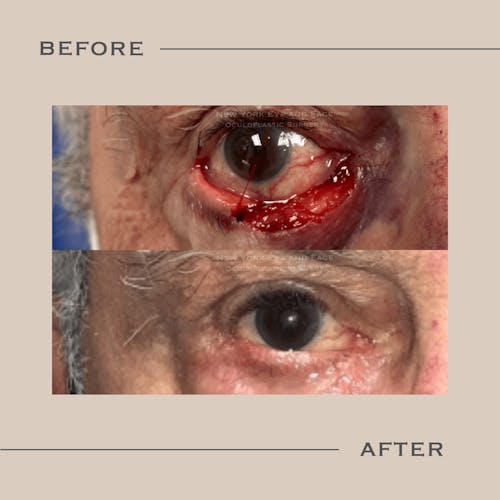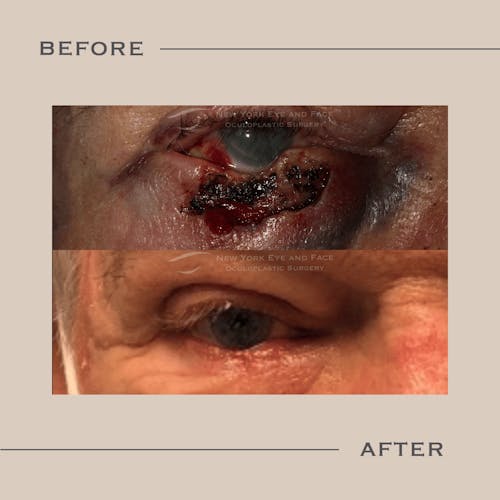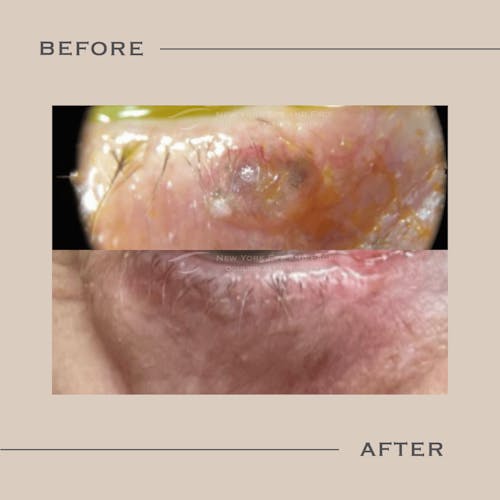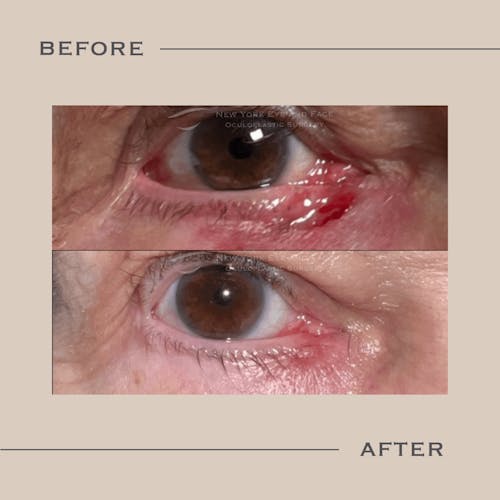Our oculofacial plastic surgeon offers the most advanced solutions in facial skin cancer reconstruction. After successful skin cancer treatment, the journey to full recovery often involves reconstructive surgery to restore facial appearance and function.
What Type of Treatment Will I Need if I Have Facial Skin Cancer?
Typically, treatment for skin cancer involves surgically removing the lesion and any affected tissues. First, your surgeon obtains a biopsy (a sample of the suspicious skin lesion) to identify whether you have skin cancer and, if so, which type. If your biopsy confirms skin cancer, the next step is to remove the lesion, typically completed using the Mohs technique by a dermatologist. This method of surgery involves removing slices of tissue and examining them under a microscope each time to look for skin cancer cells. Your surgeon repeats this process until there are no skin cancer cells left. Mohs surgery is the best technique for minimizing scarring, which is particularly important when it comes to the face.





